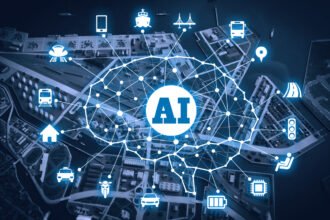Ever since its emergence at the beginning of the century, building information modeling (BIM) has streamlined the construction process of buildings, up from their conception to execution. Acting as a powerful 3D design tool, BIM software like Revit allows its users to visualize the final end product and make modifications that integrate with the model seamlessly. In addition, BIM significantly improves the communication between sectors — architects, engineers, and construction workers (AEC), as well as others.
We talked about the use of AI in tech companies. It also plays a role in many other companies as well. While most of the discussions center around AI, other technology like BIM complements it as well.
Be that as it may, the construction industry has been somewhat stagnant when it comes to technological innovations, failing to take advantage of their enormous potential. While artificially intelligent systems found their way into almost every household, the AEC industry is yet to reap the full extent of AI’s benefits.
Similarly, it should also make better use of AI-assisted embedded systems, which can be anything from sensor nodes to vehicles and self-operated machines. These systems will not only improve and accelerate construction projects but also provide even more data to ensure precise building information models.
The relationship between AI and BIM is a complementary one. BIM provides a great database for AI. At the same time, AI can help make accurate predictions and informed decisions, bringing about incredible workflow efficiency.
We talked about the benefits of BIM in site design, but it has many other benefits too. You need to be aware of them.
How BIM and AI Can Complement Each Other
Artificial intelligence (AI) is the ability of a machine to mimic human cognition and behavior. Also, it can internalize knowledge and utilize new information to improve on itself. The more information the machine absorbs, the more intelligent it becomes. AI has the ability to interpret incoming data, make decisions and adjustments, as well as come up with new ways of doing things. Since BIM is a valuable and generous source of data, AI can greatly benefit from it.
In turn, AI can strengthen BIM and take it to a whole new level. AI-assisted BIM shines in all those places where human calculations and estimations fall short, causing costly setbacks and incidents. AI will also most likely play a vital role in the creation of construction robots — embedded systems designed specifically to assist construction workers with mundane manual labor.
It appears as though almost every step in the process has the potential of being digitized and automatized, significantly reducing the need for human intervention. But while it could easily take over the majority of the workload, AI will not put people out of jobs. Instead, it will generate new ones. After all, the creativity that the human brain possesses is still unparalleled to this day.
The Advantages of Using AI in BIM
Design
Armed with knowledge on past projects, AI-assisted BIM can thoroughly analyze models, detect clashes, discrepancies, and other potential points of failure. What’s more, it could make the designers’ jobs much easier. Following a provided set of rules, AI can take over some of the repetitive tasks.
For instance, instead of manually designing a standard bathroom, designers can recruit AI to do it for them, at a much greater speed at that. In addition, engineers can use machine learning to automate the conversion of thousands of AutoCAD layer names into Revit elements.
AI isn’t known for its creative nature. However, it can help architects come up with interesting and unique parametric designs that are right up there with some of today’s most treasured pieces of modern art. Finally, using AI can help us reach sustainability goals quicker by designing buildings in a resource-efficient and environmentally responsible manner.
Instant Updates
AI has made the implementation of changes more effortless than ever. Whenever the designer makes an adjustment, no matter its scope, the rest of the model adjusts accordingly right away. Furthermore, each member of each sector is made aware of the change. They always have access to the most recent and relevant version of the model. The days of miscommunication and “he-sad, she said” could finally be put behind us.
On top of that, the utilization of on-site embedded systems allows models to reach never-before-seen levels of accuracy. For instance, wireless sensor networks such as motes can make measurements of the building, monitor the temperature, etc.
Cost and Time Management
BIM itself has already had a major impact on the time and cost management of AEC projects. However, AI could take it even further — take control of budget and scheduling issues, and completely eliminate delays and overruns.
Considering the scale of construction projects, such an advantage could be worth millions. With a vast knowledge of previous projects, AI-assisted BIM can come up with the most optimal plan for future ones. It could even prioritize and coordinate tasks.
Safety
By far the biggest advantage of AI implementation in BIM is risk mitigation. AI-assisted BIM can quickly analyze the whole model and detect irregularities, errors, and potential accidents. It allows engineers to catch them early on and prevent them before they occur on-site.
Construction is an error-prone industry. What’s more, workers get injured every day handling dangerous machines and working in unstable conditions. AI could also improve on-site safety by acting as the brain of embedded systems that substitute humans on repetitive and demanding manual tasks. It could even eliminate the need for human supervision altogether.
Conclusion
With the ever-growing population and therefore building demand, AI seems to have come at the perfect time. AI-assisted BIM could have many benefits for the AEC industries — cost and time efficiency, increased safety, risk mitigation, etc. And having the ability to learn from past successes and failures, it can improve by the second.
What’s more, technology is constantly evolving. What was once considered science-fiction (deep learning, robots, augmented reality, etc.) now has the potential to become the everyday reality of AEC industry professionals. It could help them not only visualize projects more vividly but also execute them faster and with more precision than ever.










